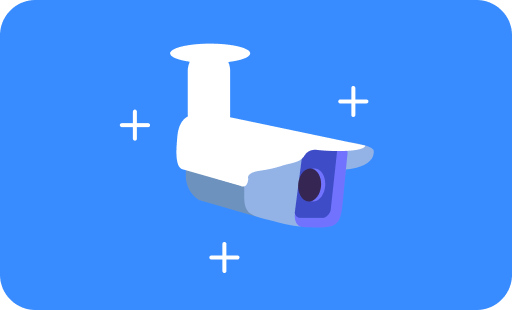Making construction site security smart with AI
- Technology
- Security for businesses

The latest artificial intelligence technology offers a cost effective and reliable solution to security monitoring for construction sites and other properties.
In the past year, the Construction Equipment Association reported that theft on construction sites has risen by 50 percent, despite the overall crime rates having fallen by 40 percent during the UK's first COVID pandemic lockdown.
However, this is not new. In a 2016 survey by the Charted Institute of Building (CIOB), 92 percent of respondents said they had been affected by theft, and more than one in five (21%) said they experienced weekly robberies. These crimes cause losses beyond the value of what is stolen; they drive insurance premiums up and cause delays while a theft is investigated, or stolen equipment is replaced.
Keeping a construction site, or any other property, secure outside working hours is a challenge. Having a security guard on the premises used to be the only option but it's expensive and not necessarily reliable. A single person, or a small team, can't cover every part of a large site and are at risk of getting distracted, tired or overworked.
In the since the CIOB survey, the trend has moved towards CCTV with remote monitoring. This is cost effective when alerts are passed on to a remote monitoring centre that can efficiently cover many sites at once. But these are not without problems either and can be easily overwhelmed. New technology, in the form of artificial intelligence (AI), is offering a solution.
Video surveillance and false alarms
Some remote monitoring centres face huge challenges in dealing with as many as 100,000 alerts every month, which places huge pressure on operators who have to review each one. That can lead to backlogs, with overwhelmed staff unable to process them in time. In the worst case, genuine alarms can get lost in the queue, going unseen until it is too late or even missed entirely.
Want to learn more about AI in video surveillance? Download our free ebook.
Part of the problem is that almost 95 percent of alerts will be false alarms. This can lead to complacency among operators who might miss genuine alerts because they have been conditioned to expect false alarms. It also makes the job feel tedious and unrewarding - instead of preventing crime, staff are overwhelmingly clearing false alarms.
The resulting environment of high pressure and low reward can lead to a high staff turnover. That increases costs for the monitoring company, who have to constantly recruit and train replacements and cannot rely on a foundation of experience among staff.
Integrating intelligent video analytics
Advanced technology is paving the way for improvements to CCTV monitoring. AI is just one approach being introduced to tackle this problem. Unlike humans, computers don't get distracted or overwhelmed, regardless of how many alarms they receive. While some systems require expensive, bespoke equipment, some, like Calipsa's, can be added to existing camera installations in a matter of minutes.
Where AI recognises that the alarm isn’t caused by human or vehicle movement, it will dismiss them automatically, allowing operators more time to focus on what truly matters. When an alarm is raised, the ideal solution is for the system to send a selection of still images for review - that not only saves time but also reduces the need to transfer large amounts of data.
This isn't as simple as it sounds. AI systems need to be 'trained' - a process that requires them to analyse enormous data sets so that their algorithms can be finely tuned to allow them to pick out the correct information. Calipsa's AI engine, for example, has been trained over three years to distinguish an event triggered by a human or a vehicle from a false alarm that could be caused by anything from a change in lighting, to a bird flying past or a pesky spider crawling across the camera.
Introducing AI to video security monitoring can greatly enhance operator processes by, in the case of Calipsa, removing over 80 per cent of false alarms. For a busy monitoring centre that means a reduction of as many as 80,000 alerts per month and, because AI is constantly improving, the system will become more efficient as it learns. Any alert with the potential to be a genuine threat is passed to a human operator. Needless to say, this makes it much more likely that real alerts will be identified and dealt with more quickly.
With the consequences of missing a real intrusion being so high, the industry is realising the need to review current practices. Combining the powers and strengths of computers and humans could be the answer to monitoring efficiency.
If you want to learn more about how AI can enhance video surveillance, check out our webinar, "Artificial intelligence in video surveillance", which you can watch free and on demand.
Editor’s Note: This post was originally published in July 2019 and has been updated for accuracy and comprehensiveness.









No comments